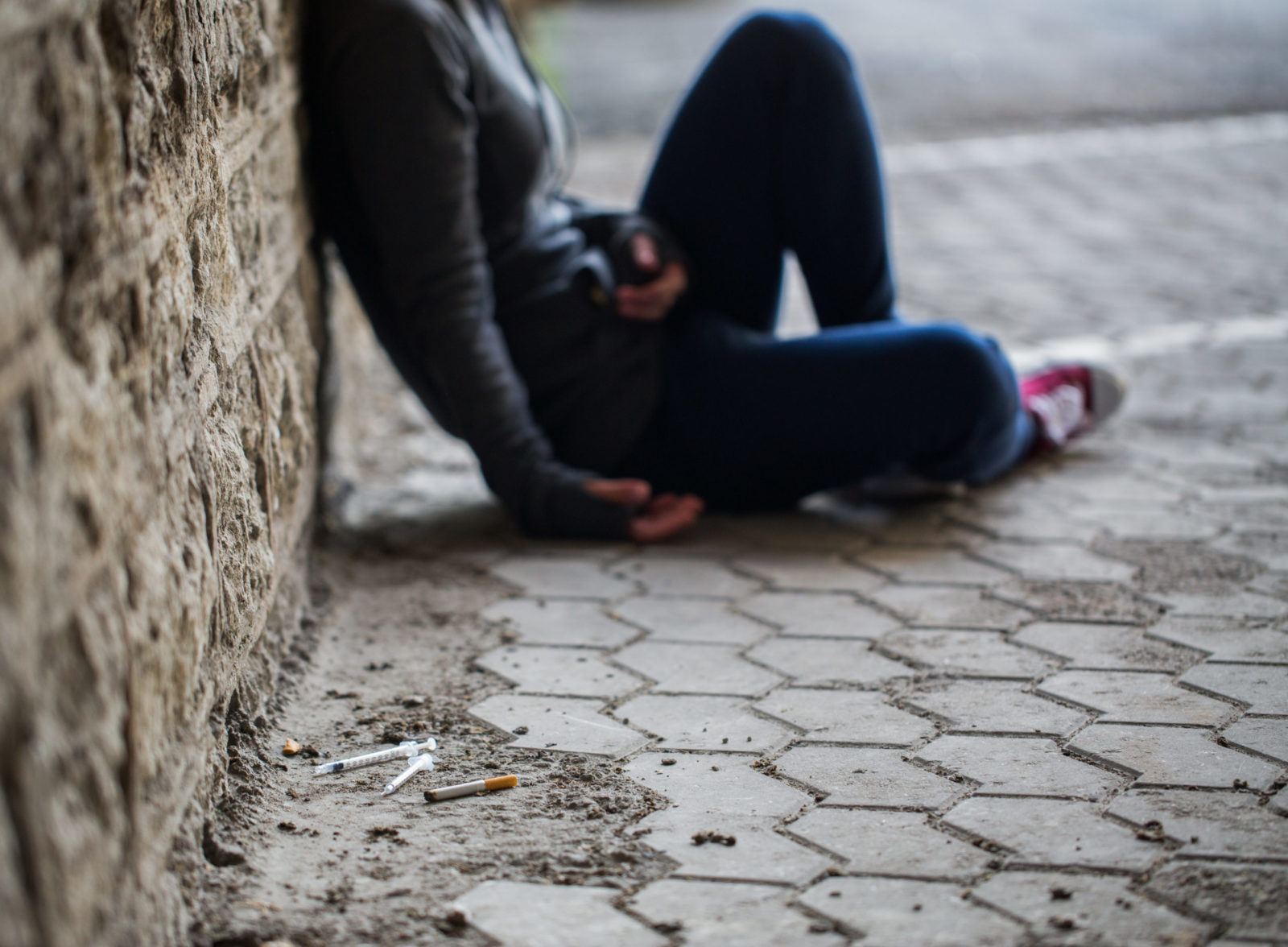From “Night of the Living Dead” in 1968 to AMC’s “The Walking Dead,” Hollywood storytellers have been enthralled by capturing the nightmarish fiction of zombies for decades. It’s both fun and terrifying to entertain: How would you survive in a world overrun by decaying, flesh-eating monsters?
The likelihood of a zombie apocalypse like the ones portrayed in movies and TV shows is slim to say the least, but in the slums of some of America’s largest cities, it seems the apocalypse is already upon us. Only it’s not a virus or a curse turning people into walking shells of their former selves – it’s drug addiction.
Between 2010 and 2020, the number of calls made to San Francisco’s 311 line complaining of used hypodermic needles on sidewalks, in parks, and elsewhere rose from 224 to 6,275. In 2018, footage of dozens of people slumped over in an entrance to a Bay Area Rapid Transit (BART) station, many with needles in their arm, went viral. “We call it the heroin freeze,” said one local. “They can stay that way for hours.” Said another, “It’s like the land of the living dead.”
Michael Shellenberger, San Fransicko, pages 7-8
In 2018, this shocking video went viral, showing addicts using drugs at the San Francisco Civic Center BART Station:
More recently, a 23-minute video tour of Philadelphia streets shows people stumbling around, frozen in place, zoned out, and passed out on their drug of choice.
These are heartbreaking scenes, but scenes we must not turn a blind eye to lest the situation grow worse than it already is. And it is this heartbreaking addiction that fuels much of the homelessness crisis. Writes Michael Shellenberger in his new book, San Fransicko: Why Progressives Ruin Cities:
For decades researchers have documented much higher levels of mental illness and substance abuse among the homeless than in the rest of the population. It’s true that just 8 and 18 percent of homeless people point to mental illness and substance abuse, respectively, as the primary cause of their homelessness, but researchers have long understood that such self-reports are unreliable due to the socially undesirable nature of substance abuse, and the lack of insight that often accompanies mental illness. Using other methods, San Francisco’s Health Department in 2019 estimated that 4,000 of the city’s 8,035 homeless, sheltered and unsheltered, are both mentally ill and suffering from substance abuse. Of those 4,000, about 1,600 frequently used emergency psychiatric services.
The same is true in other cities. In 2019, the Los Angeles Times analyzed government data and found that two-thirds of homeless in Los Angeles struggle with either addiction or mental illness. Against the insistence among some progressives that homelessness is strictly the result of poverty and housing prices, researchers for decades have documented not just the prevalence of mental illness and substance abuse among the homeless, but also their role in creating homelessness in the first place. (Emphasis added)
Michael Shellenberger, San Fransicko, page 8
We are living in the midst of a zombie apocalypse. But there is hope. Unlike the Hollywood stories, these zombies can be restored to their humanity. Take the story of Tom Wolf, for example:
Wolf, a native of San Francisco, was living a rather typical, happy life until 2015. He and his wife of 20 years own a home in Daly City and have two kids, a 13-year-old girl and a 10-year-old boy. He worked as a child support officer for the city of San Francisco. But foot surgery changed everything.
He became addicted to the oxycodone prescribed by his doctors to numb the pain. He was a self-described “functional addict,” able to keep his job and keep playing dad for a while. But he was secretly buying pills in the Tenderloin for $30 apiece after his doctors stopped prescribing them. He spent more than $100,000 on pills, he said, and eventually quit his job.
Heather Knight, “It’s ‘life or death’: Recovering addict wants to reinvent SF response to drug crisis” at San Francisco Chronicle
His addiction spiraled. He left his family. He spent five months getting high on the streets of San Francisco. He was arrested six times. After the sixth arrest, he spent six months seeking treatment at a Salvation Army Adult Rehabilitation Center. He’s been clean ever since, is now reunited with his family, and works for the city of San Francisco on their Community Advisory Board and their Street-Level Drug Distribution Task Force.
Keep your eyes wide open. Each person in the videos above is a human being, robbed of a normal and flourishing life by a cruel addiction. To treat the homelessness crisis as if it is only an economic matter is to miss and neglect the very real suffering of those living – addicted – on the streets.

